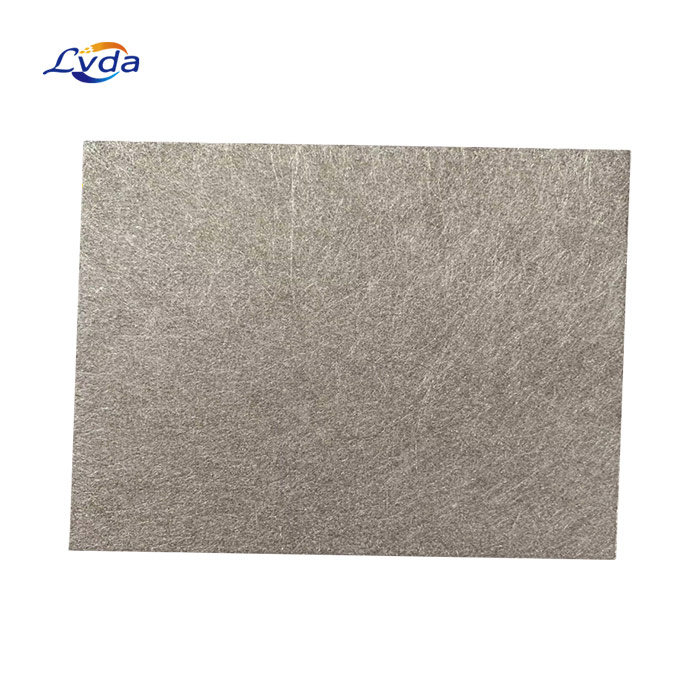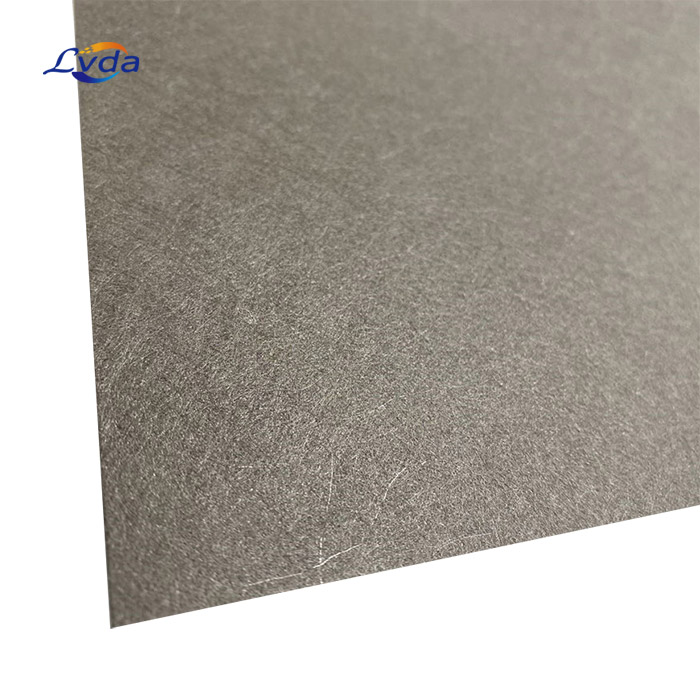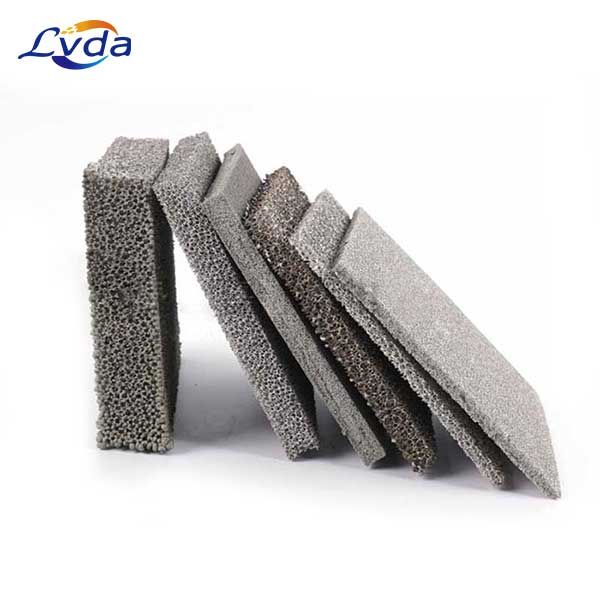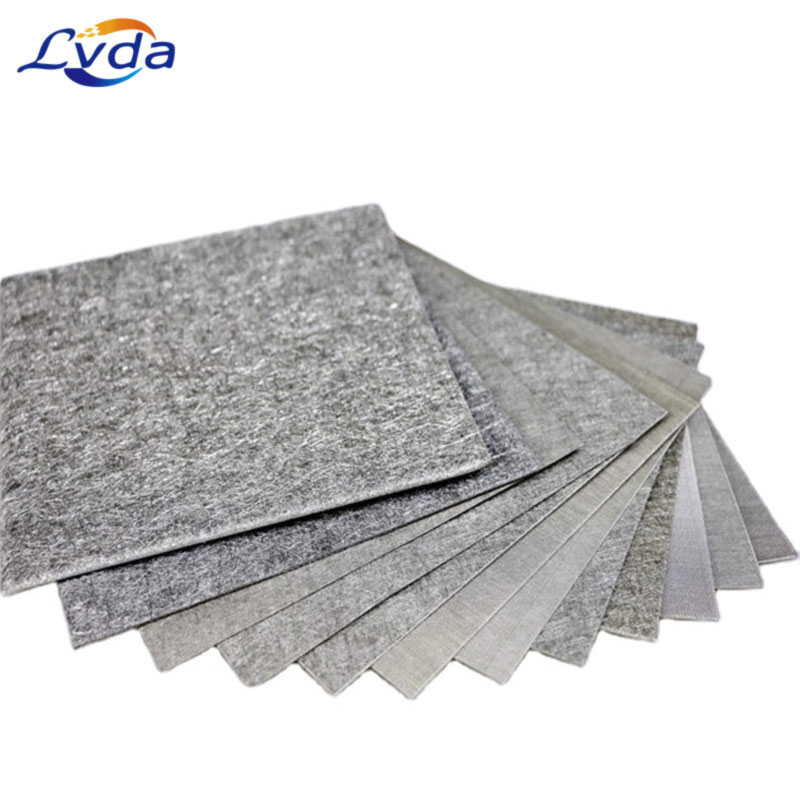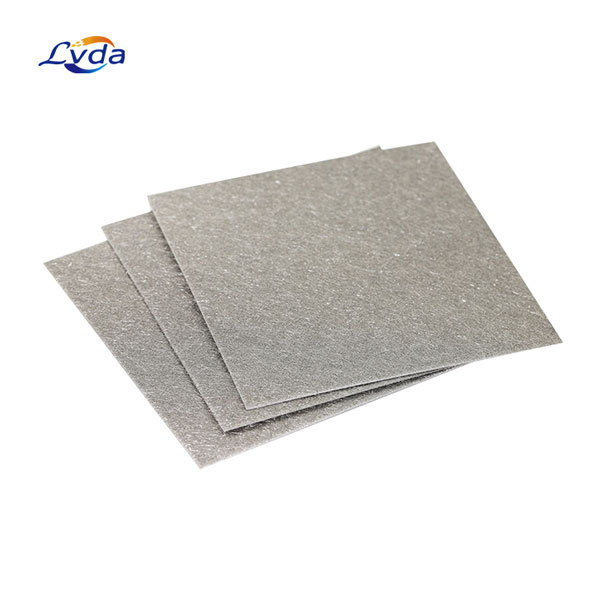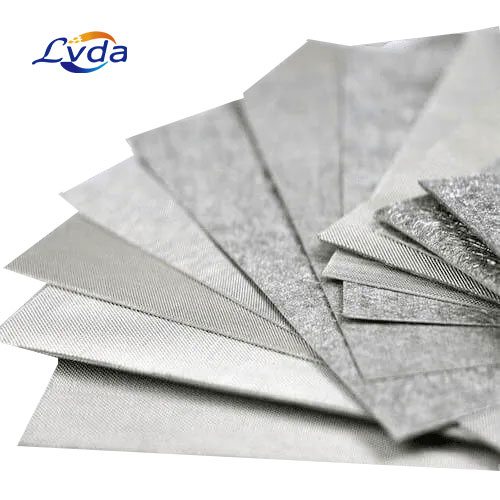Product Details
Proton exchange membrane (PEM) fuel cells are a type of fuel cell that uses a solid polymer membrane as the electrolyte. They operate at relatively low temperatures, which makes them suitable for a wide range of applications, including transportation and stationary power generation. PEM fuel cells convert the chemical energy of hydrogen and oxygen into electrical energy through an electrochemical process that produces water as the only byproduct, making them a clean and efficient energy source.
One of the critical components of a PEM fuel cell is the gas diffusion layer (GDL), which plays a significant role in the performance and durability of the fuel cell. The GDL serves several functions: it provides a pathway for the transport of reactant gases to the catalyst layer, facilitates the removal of product water, conducts electrons from the catalyst layer to the current collector, and provides mechanical support for the membrane electrode assembly (MEA).
Titanium felt is a material that has been explored for use in the GDL of PEM fuel cells due to its unique properties that can enhance the performance of the fuel cell. Titanium is known for its high strength-to-weight ratio, excellent corrosion resistance, and good electrical conductivity. When processed into a felt form, titanium offers a porous structure that allows for efficient gas diffusion and water management within the fuel cell.
Titanium Felt as Gas Diffusion Layer Material
Titanium felt is a promising material for use as a gas diffusion layer in PEM fuel cells. Here are some key properties of titanium felt:
- High electrical conductivity. Titanium has excellent electrical conductivity, which allows for efficient electron transfer between the catalyst and the external circuit. This property enhances the overall performance of the fuel cell.
- Excellent corrosion resistance. Titanium is highly resistant to corrosion, making it suitable for environments with aggressive chemicals, such as the acidic conditions in PEM fuel cells.
- High mechanical strength. Titanium felt exhibits excellent mechanical properties, including high tensile strength and durability, ensuring its longevity under operational conditions.
- Good gas permeability. Titanium felt has a porous structure that allows for efficient gas diffusion, ensuring a uniform distribution of hydrogen and oxygen across the catalyst layers.
Advantages of Titanium Felt in PEM Fuel Cells
The use of titanium felt as a gas diffusion layer in PEM fuel cells offers several benefits:
- Improved performance. The high electrical conductivity and gas permeability of titanium felt enhance the overall performance of the fuel cell, resulting in higher energy conversion efficiencies.
- Enhanced durability. Titanium's excellent corrosion resistance properties make it a suitable material for long-term use in fuel cells, reducing maintenance and lifecycle costs.
- High thermal stability. Titanium has high thermal stability, enabling the fuel cell to operate at higher temperatures without compromising its performance or durability.
- Potential for lightweight design. Titanium is lighter than traditional materials like carbon fiber composites, which can lead to the development of lighter and more compact fuel cell systems.
Although titanium felt has demonstrated significant potential as a GDL material in PEM fuel cells, several challenges remain to be addressed. One major challenge is reducing the cost of titanium felt production to make it more competitive with conventional GDL materials. Moreover, further research is needed to optimize the material's properties, such as porosity, electrical conductivity, and hydrophobicity, for various fuel cell applications.


